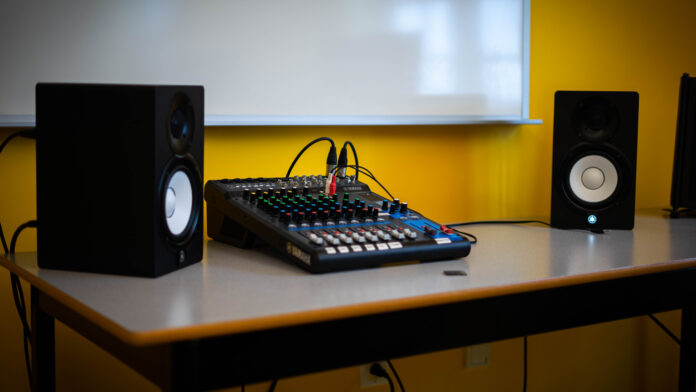
When Donald Dickson, a journalism professor at St. Thomas University, learned the broadcasting courses he has taught for the past 16 years were not on the course offerings for the upcoming academic year, he was “a little bit disappointed.”
“I’m still a part-timer, [so] I’m not involved in the discussions,” he said.
“I’m just assuming that we’re moving a bit more toward digital media and away from broadcast.”
Dickson said these changes are part of a “bigger picture,” as STU introduces many courses for the new digital media and creative arts major and certificate.
Related: STU introduces certificate, major in digital arts and literacy
The courses introduced include Digital Media Creation, Digital Photography and Documentary Film. The three are focused on content creation for print, photography and video, while the audio element is still being taught through a journalism course, Radio and Podcasting.
Jamie Gillies, head of the department of journalism and communications, said he doesn’t believe this will take away from journalism students, but rather augment the journalism experience at STU.
“These courses are not the same, but they do have some of the same content,” he said.
Gillies said current journalism and communications students, and those focusing on digital media, are doing similar things with respect to cameras, video creation and production. Gillies added the new courses are useful for people outside of journalism who want to learn more about creative digital production.
“We feel like there’s a lot of content creators out there within the student body and also hopefully future students who would find a home in our department with the idea of journalism, communications and media,” he said.
Still, Dickson said journalistic broadcasting requires skills that are different from those needed for digital media.
“They’re looking at new … digital media outlets; they’re not thinking of newscasts like what we watch at suppertime,” said Dickson. “The emphasis seems to be diminished on the journalism component.”
Philip Lee, another journalism professor, said he hopes the new curriculum will prepare journalists for the new demands of the industry as it evolves. He said journalists are slowly moving towards multimedia content to enhance their storytelling.
He considers these changes a “step in that direction.”
“There’s less emphasis on traditional television news reporting and more emphasis on content creation,” said Lee.
Lee expects the digital media lab in James Dunn Hall to be ready by this coming September so students have a place to explore both journalism and creative digital creation. The proposed lab has seen significant worker and material delays.
Related: Disappointment as JDH media lab delays continue
After nearly two decades of teaching, Dickson said none of the new digital media courses available for part-time professors fit his qualifications as he hasn’t produced documentaries or films for years, which is why he didn’t bid on any of them.
With no courses left to teach, he is retiring.
“That’s something I never wanted to do,” he said.
“This is something I really enjoy.”
